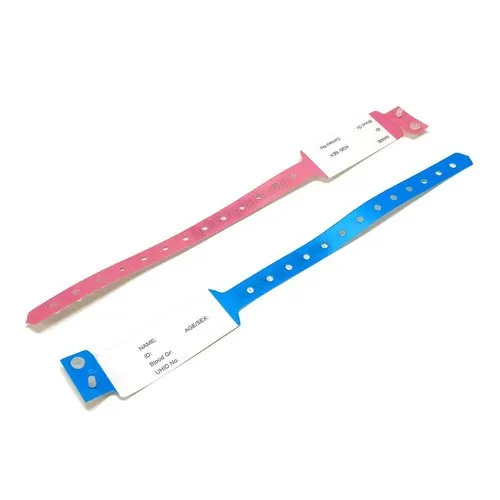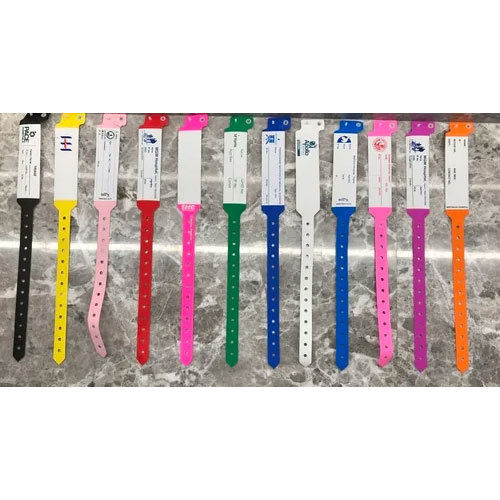The Development of the Patient Identification Band in Healthcare Facilities
The Development of the Patient Identification Band in Healthcare Facilities
Blog Article
Exploring the Various Types of Patient Identification Band Used in Medical Facilities
In the elaborate globe of medical care, the crucial function of Patient Identification bands frequently goes undetected. These bands, differing from easy paper wristbands to sophisticated RFID bands, create the backbone of Patient security methods, ensuring accuracy in Patient Identification.
Comprehending the Relevance of Patient Identification Bands
While they may appear like simple accessories, Patient Identification bands play a crucial function in medical facilities. These bands work as an important device for verifying Patient identity, stopping medical mistakes related to misidentification. The bands usually display crucial details such as the Patient's name, age, blood group, and any type of recognized allergic reactions. They permit healthcare professionals to swiftly access this crucial info, thereby helping with exact and prompt clinical treatment. Patient Identification bands additionally help in improving administrative jobs, ensuring precise record-keeping and billing. Regardless of their simplicity, these bands personify the principle of Patient security, a cornerstone of quality health care. Without them, the danger of clinical errors, and consequently, Patient harm, might substantially boost.
Typical Paper Wristbands: Their Usage and Limitations
Conventional paper wristbands have been a staple in Patient Identification throughout different clinical centers. While their use is widespread, they nurture certain restrictions that might influence their effectiveness in Patient monitoring. This area will concentrate on the extent of their application and the intrinsic drawbacks related to their use.
Paper Wristbands: Use Scope
In the world of Patient Identification, paper wristbands have actually long held a crucial function. These bands are generally utilized in outpatient settings, where the Patient's stay is temporary. Regardless of advancements in innovation, the modest paper wristband remains a affordable and reliable solution for Patient Identification in various health care circumstances.
Limitations of Paper Wristbands
In spite of their extensive usage, paper wristbands are not without their drawbacks. Their physical toughness is among the considerable restrictions. Direct exposure to water, sweat, or misuse can make them unreadable or also cause them to break down. Furthermore, paper wristbands usually do not have the technical capacities of even more contemporary options, such as barcoding or RFID chips, restricting their performance to just displaying written information. The lack of ability to upgrade or modify the data on the wristband is one more imperfection. Furthermore, if the info is transcribed, readability can be jeopardized, leading to possible misidentification. Paper wristbands can cause discomfort or skin inflammation to some clients, specifically when used for extended periods.
Barcoded Wristbands: Advancements in Patient Identification
While Patient Identification has actually long been a critical facet of medical care, the advent of barcoded wristbands represents a substantial jump ahead. These bands utilize the simplicity of barcoding modern technology, enabling for Patient details to be promptly scanned and accessed. They boost the rate and precision of Patient Identification, minimizing the risk of click to investigate clinical mistakes associated to misidentification.
Radio Regularity Identification (RFID) Bands: a Step Towards Futuristic Healthcare
The evolution of Patient Identification bands has actually caused the introduction of Radio Regularity Identification (RFID) Bands (patient identification band). These innovative devices existing essential advantages for health care facilities, offering an extra reliable and technologically progressed ways of Patient Identification. The execution of RFID in health care is a significant action in the direction of a much more advanced method to Patient administration and security
Recognizing RFID Bands

RFID Bands: Key Advantages
Welcoming a future where modern technology and healthcare combine, radio regularity Identification bands use several essential advantages. Mostly, these bands enhance Patient security by giving accurate, instantaneous Identification, thus reducing medical mistakes. RFID bands can store a huge quantity of Patient data, consisting of clinical history and allergies, allowing individualized treatment. They additionally enhance management jobs, as the automated information access changes hands-on processes, enhancing effectiveness and reducing documents. RFID bands use real-time monitoring of people, essential in risky settings such as surgery or extensive care. Last but not least, these bands are resistant and sturdy to ecological variables, ensuring regular performance. Generally, RFID bands stand for a significant improvement in Patient Identification innovation, profiting both people and healthcare providers.
Applying RFID in Healthcare
These bands supply a seamless way to track and recognize clients, ensuring their safety and enhancing efficiency in therapy procedures. RFID bands reduce clinical mistakes by supplying exact Patient Identification, which is crucial in avoiding misdiagnosis or incorrect medication management. Therefore, the implementation of RFID bands is a substantial action in the direction of boosting Patient safety and security and health care shipment.

Color-Coded Wristbands: Aiding in Quick and Accurate Diagnosis
In the dynamic atmosphere of a medical facility, color-coded wristbands have emerged as vital devices for swift and accurate Identification of an individual's medical problem. These wristbands, worn by patients, bring certain colors that correspond to different medical conditions or statuses. This system is developed to provide prompt visual cues to healthcare providers, boosting Patient safety and care quality.
Approaches for Reliable Application and Management of Patient ID Bands
Attaining ideal use of find out here Patient Identification bands requires a well-structured approach for their implementation and administration. Patient education and learning is also essential; clients should understand the purpose of the bands and the demand for their consistent wear. It's important to have a back-up plan in place, such as barcode scanning or biometrics, to ensure that Patient Identification is never ever endangered.
Conclusion
Patient Identification bands are crucial in medical centers to ensure safety and accuracy. Efficient application and management of these bands can significantly reduce medical mistakes, improve effectiveness, and boost overall Patient treatment.
These bands, differing from simple paper wristbands to advanced RFID bands, form the foundation of Patient security protocols, making certain accuracy in Patient Identification.The development of Patient Identification bands has brought about the development of Radio Frequency Identification (RFID) Bands. In general, RFID bands represent a considerable innovation in Patient Identification modern technology, profiting both individuals and medical care providers.
RFID bands minimize medical errors by offering precise Patient Identification, which is vital in preventing misdiagnosis or incorrect medication administration. Patient education is additionally essential; individuals need to recognize the function of the bands and the requirement for their consistent wear.
Report this page